Main menu
Common skin conditions

NEWS
Join DermNet PRO
Read more
Quick links
Author: Hon Assoc Prof Amanda Oakley, Dermatologist, Hamilton, New Zealand, 2013. Updated by Dr Fen-Lan Cherry Chang, House Officer, Middlemore Hospital, Auckland, New Zealand. DermNet Editor in Chief: Adjunct Assoc. Prof. Amanda Oakley, Dermatologist, Hamilton, New Zealand. November 2019.
Introduction Demographics Causes Clinical features Diagnosis Treatment Outcome
Anagen effluvium refers to hair shedding that arises during the anagen or growth stage of the hair cycle.
This is in contrast to telogen effluvium or hair shedding that arises during the telogen or resting stage of the hair cycle.
Anagen effluvium is due to an acute injury to the hair follicles by an endogenous or exogenous cause, resulting in sudden diffuse shedding of structurally damaged hairs. Diffuse alopecia (hair loss) may occur over a period of days. The alopecia is non-scarring.
Anagen effluvium is most common in patients of any age, sex, or race receiving chemotherapy.
Individuals with autoimmune conditions such as alopecia areata and pemphigus vulgaris can be affected.
Any insult that impairs mitosis of hair follicle keratinocytes can cause anagen effluvium. Disruption to cell division in the hair matrix makes the hair narrowed at its base and susceptible to breakage just above the zone of keratinisation. The necrotic matrix forms plugs consisting of melanin, keratin and inner root sheath which are extruded through the follicular opening. This process is known as trichomalacia.
The main causes of anagen effluvium are an infection, a drug, a toxin, radiation or an autoimmune disease.
An infection may interrupt hair growth in a localised area resulting in a single bald patch or several bald patches. Loose hairs can readily be extracted from the infected area, which may be swollen, boggy and crusted. Examples include:
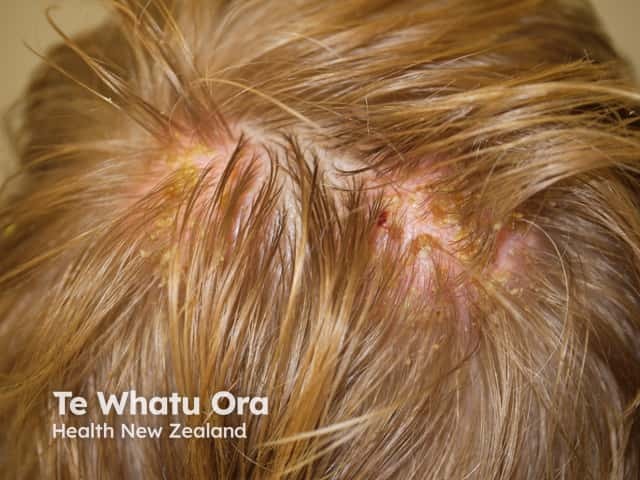
Anagen effluvium: fungal infection (kerion)
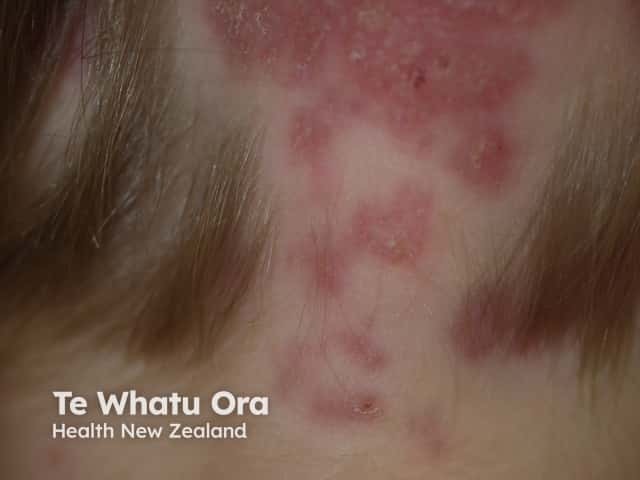
Anagen effluvium: fungal infection (kerion)
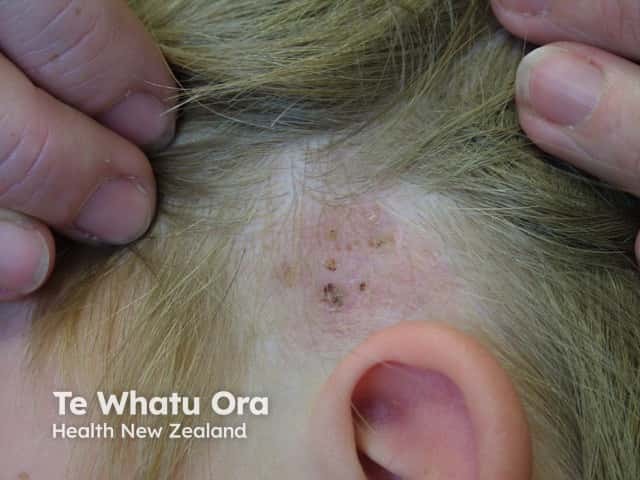
Anagen effluvium: fungal infection (kerion)
Toxins that can interrupt hair growth include:
Alopecia develops within 2 to 4 weeks of chemotherapy. It affects most parts of the scalp, but other sites may be affected, such as eyebrows, armpits and genital area.

Anagen effluvium: loss of eyebrows from chemotherapy
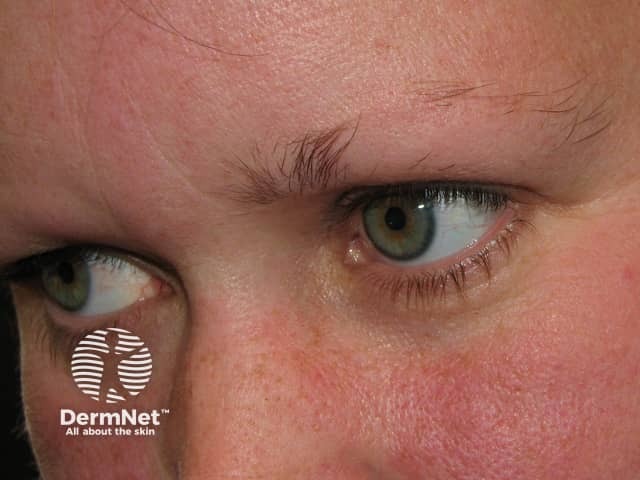
Anagen effluvium: loss of eyebrows in alopecia areata
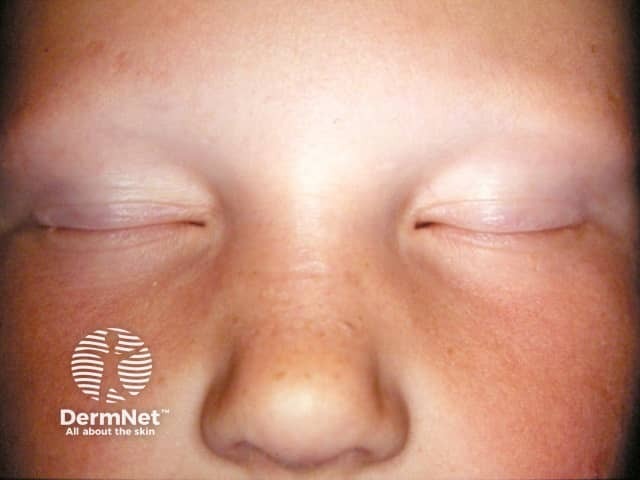
Anagen effluvium: loss of eyelashes in alopecia areata
Radiation to the scalp can result in anagen effluvium. Regrowth of hair may be incomplete or may not occur.
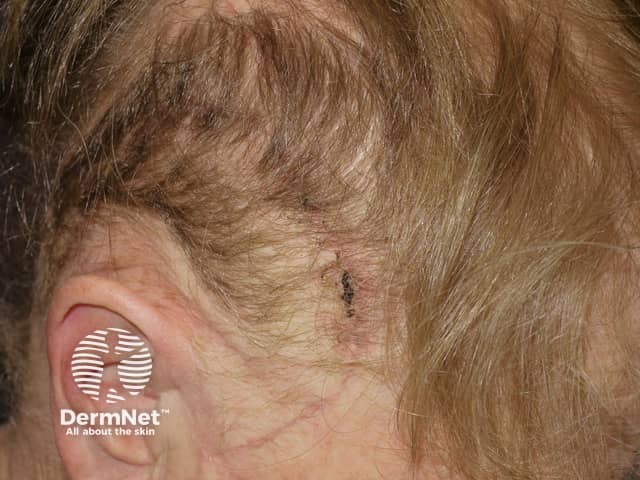
Anagen effluvium due to cranial irradiation
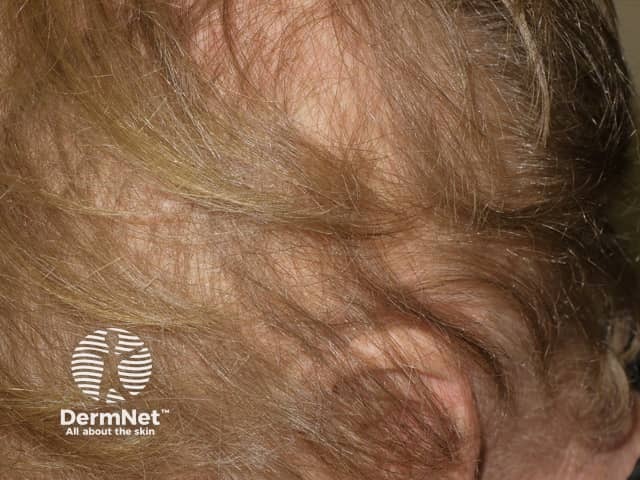
Anagen effluvium due to cranial irradiation
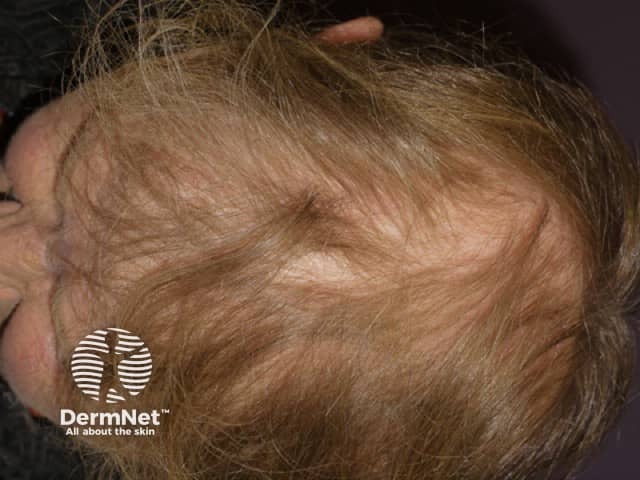
Anagen effluvium due to cranial irradiation
Autoimmune hair loss includes alopecia areata and its variants, alopecia totalis and alopecia universalis. Anagen effluvium may also occur in the rare immunobullous disease, pemphigus vulgaris.
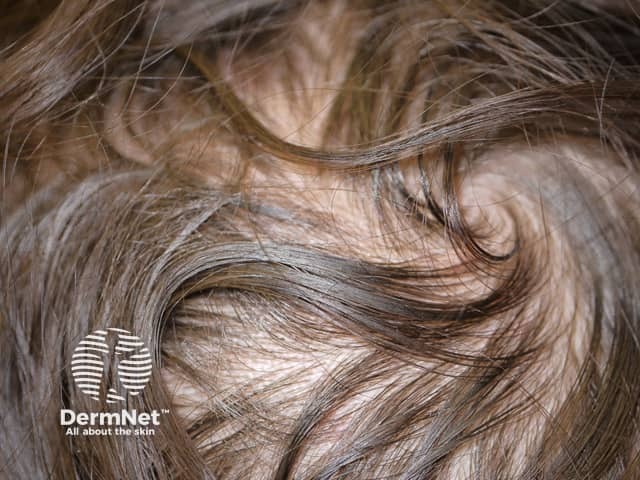
Anagen effluvium: lupus erythematosus
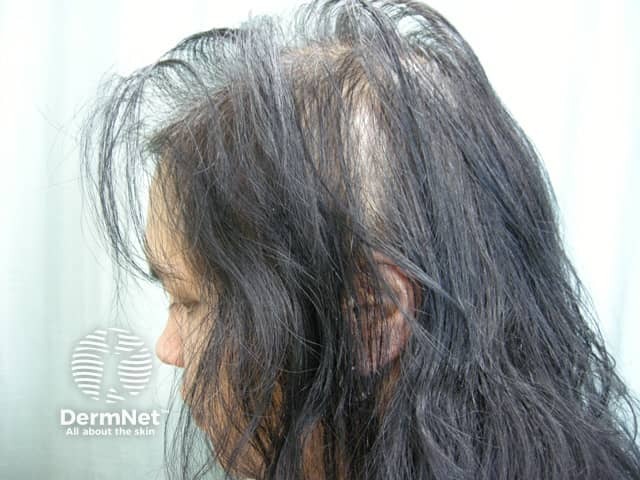
Anagen effluvium: alopecia areata
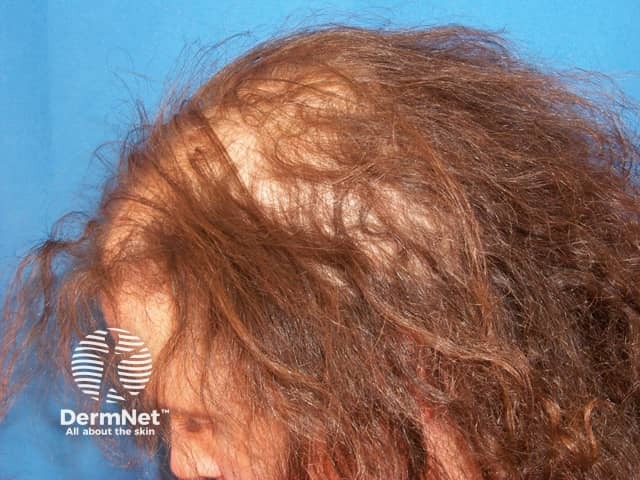
Anagen effluvium: alopecia areata
Anagen effluvium presents with abrupt shedding of much of or all of the hair on the scalp, and often from the entire body including eyebrows, eyelashes and body hair. It may leave the scalp partially or completely bald shortly after the traumatic event with up to 90% hair loss over a period of weeks.
Other features depend on the cause of the hair shedding.
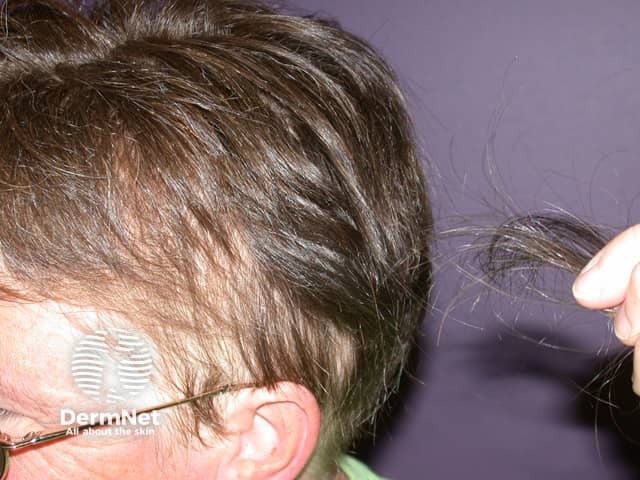
Anagen effluvium
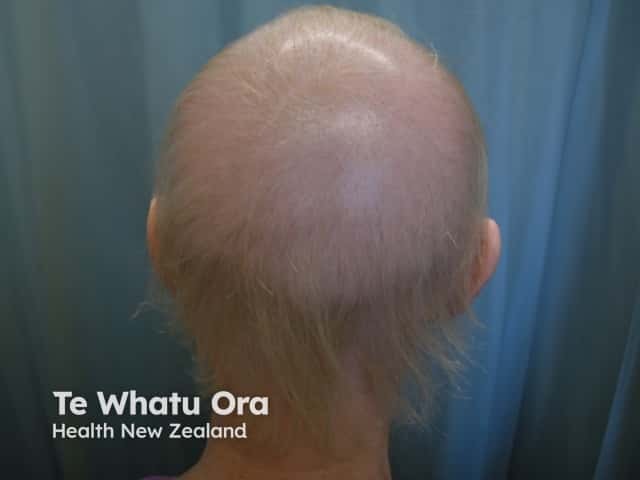
Anagen effluvium

Anagen effluvium
The diagnosis of anagen effluvium is usually made by taking a careful history, particularly of recent medicines, and by examining the scalp and shed hair clinically and by dermoscopy/trichoscopy.
In anagen effluvium, the end of the hair that comes from the scalp is tapered, narrowed, irregular, or broken off. Anagen hairs have long roots covered with the inner and outer root sheaths and are pigmented. In contrast, telogen hair is a roundish bulb or club. The follicular openings remain in both conditions.

Anagen effluvium: hair pull

Anagen effluvium: hair pull
A trichogram (forcible hair plucking within a unit area to determine the ratio of anagen to telogen hair) will show a large proportion of dystrophic anagen hairs.
Scalp biopsy should reveal a normal anagen-to-telogen ratio of any persisting hairs in anagen effluvium due to chemotherapy.
Other tests may be arranged to rule out other causes of hair loss, including iron deficiency, thyroid disease, systemic lupus, and infections (eg, syphilis).
Anagen effluvium due to chemotherapy is expected to recover fully within 3–6 months of stopping it. The hair nearly always grows back normally, but sometimes patients with straight hair develop curly hair when it regrows. Hair colour may also change.
Suggested treatments for anagen effluvium include:
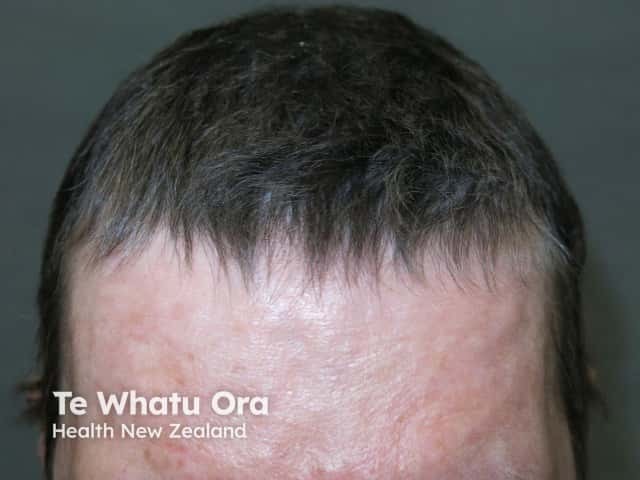
Anagen effluvium: regrowth after chemotherapy
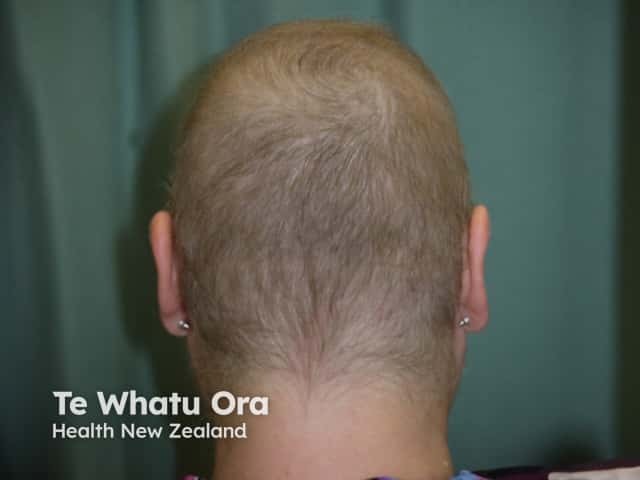
Anagen effluvium: regrowth after chemotherapy
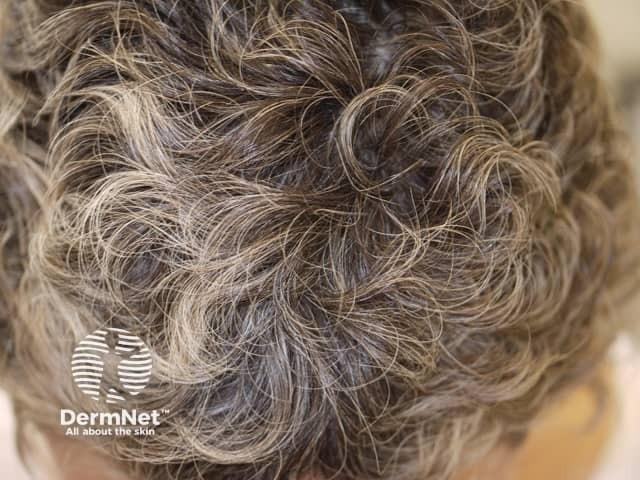
Anagen effluvium: regrowth after chemotherapy with curly hair
Anagen effluvium is reversible. The hair follicle resumes normal activity after any toxic agent is withdrawn. Complete regrowth occurs after 3–6 months after chemotherapy in most cases. Sometimes the hair regrows despite the continuation of chemotherapy.
Anagen effluvium due to alopecia areata may persist; recovery is unpredictable.